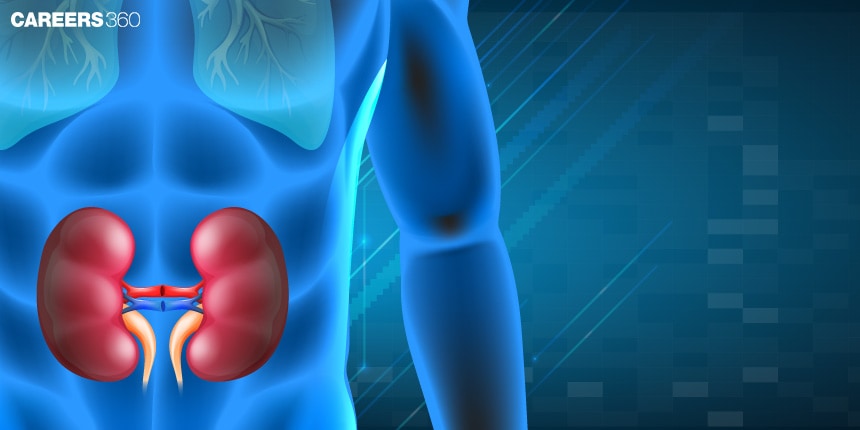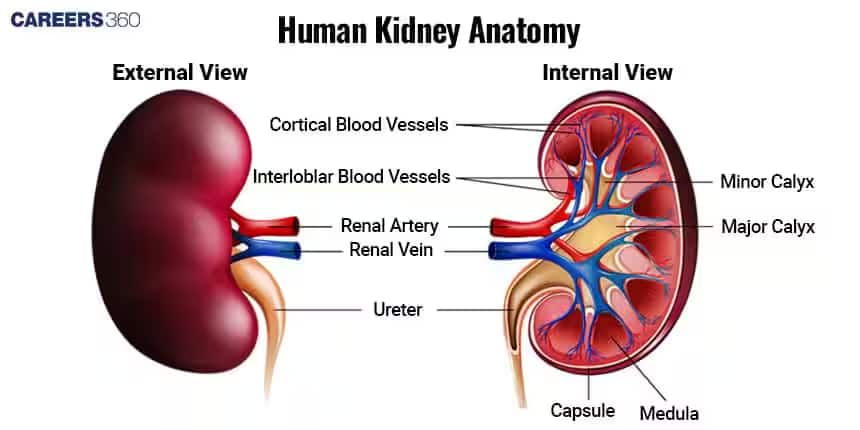Regulation Of Kidney Function: Structure, Flow Chart, Regulation
Proper and balanced regulation of kidney functioning is important in maintaining balance in the body's inner environment. Regulation of renal function is based on hormonal control by ADH and aldosterone, and others like the renin-angiotensin system and so on, which bring about balance in water, electrolytes, blood pressure, and so on with proper excretion of the metabolic wastes. This is because feedback systems involving the hypothalamus, pituitary gland, and kidneys work in harmony to maintain homeostasis, showing the complicated way through which kidney function regulation occurs. This is an important topic from the chapter Excretory Products and their Elimination in Biology.
This Story also Contains
- Excretion
- Control of Kidney Function
- Regulation involving the Hypothalamus
- Regulation involving Juxtaglomerular Apparatus (JGA)

Excretion
Excretion can be explained as a biological process of the elimination of waste products from an animal's body. This is a process that is geared toward the pursuance of homeostasis, protection from the accumulation of harmful substances, and the general smooth running of several physiological systems. In the human body, the major excretory organs include the kidneys, lungs, skin, and liver.
Kidney
The kidneys are some of the most important organs of the body. They serve to filter all the blood to remove waste products and excess fluids, as well as maintain fluid and electrolyte balance and perform many other functions. Each kidney contains about one million functional units called nephrons within the nephrons, the actual filtering process occurs along with secretion and reabsorption. Apart from that, kidneys also help in maintaining blood pressure and the number of red blood cells and control the body's acid-base status.

Control of Kidney Function
The regulation of kidney function is a complicated process to ensure that the kidneys produce effective filtration of blood and also maintain the internal environment of the surroundings of the body. Mechanisms involved in this regulation are renal, neural, and hormonal, that is intrinsic renal processes.
Also Read:
Regulation involving the Hypothalamus
This is a part of the brain that is involved in the functions regulating the kidney through the release of a set of different hormones. An important hormone in this system is Antidiuretic Hormone, more commonly known as vasopressin.
Antidiuretic Hormone (ADH)
The hypothalamus detects changes in blood osmolarity and, in high osmolarity conditions, releases ADH from the posterior pituitary. It increases water reabsorption in the kidney, reducing urine output and returning blood osmolarity to normal by dilution.
Regulation involving Juxtaglomerular Apparatus (JGA)
The juxtaglomerular apparatus is, therefore, the structure in the kidney critical in increasing blood pressure and filtration rate. It is mainly composed of juxtaglomerular cells, the macula densa, and extraglomerular mesangial cells.
Renin-Angiotensin-Aldosterone System (RAAS)
In response to the decrease in blood pressure, the juxtaglomerular cells secrete the enzyme renin, which will give rise to a renin-angiotensin-aldosterone cascade. Angiotensin II is a strong vasoconstrictor and mediates the release of aldosterone from the adrenal cortex. Aldosterone increases the reabsorption of sodium, and its reabsorption increases water reabsorption, which will then increase the blood.
Tubuloglomerular Feedback
The macula densa cells of JGA can sense the alteration in the concentration of sodium chloride in the filtrate. In the event of a decreased concentration of Na+, the macula densa can cause juxtaglomerular cells to secrete renin the enzyme in circulation, which alters the level of filtration and reabsorption in Na+.
Also Read:
Recommended video on Regulation of Kidney Function
Frequently Asked Questions (FAQs)
The RAAS includes the release from the kidneys of renin into the general circulation, stimulating an increase in angiotensin II, elevating blood pressure and volume by constricting blood vessels and the release of aldosterone, thus increasing Na+ retention.
ADH decreases urine output and increases water reabsorption in the kidneys since the hypothalamus releases this hormone to maintain blood osmolarity.
A healthy diet, staying hydrated, exercising, and using as little medicine and toxins as possible are some protective factors one may take to keep kidney health in check.
Kidneys can work to control blood pressure by making changes in blood vessel constriction, along with balancing the body's fluid levels.
Important hormones in this are antidiuretic hormone, aldosterone, and renin; these three act on water and salt balance in the body.